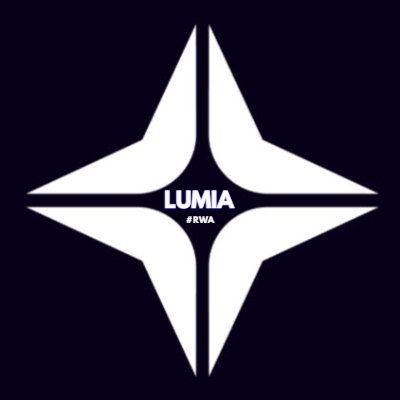Specialized blockchain RWA Lumia. Specialized blockchain RWA Lumia, what are its features? Discover its ecosystem and direct access to its official website.
Specialized blockchain RWA Lumia, here’s a specialized blockchain that meets very specific needs, find out what they are.
Lumia is a blockchain evolving in a constantly changing universe. A new star is shining with increasing intensity: Lumia. This Layer 2 blockchain is revolutionizing traditional concepts of security, decentralization, and liquidity. In this article, we will explore the essential aspects of this innovative technology and what sets it apart in the market.
If you follow blockchain news, then this project should be of interest to you, here’s why.
Specialized blockchain RWA Lumia – Goals and Vision:
This blockchain was created with a clear vision: to solve major friction points in the blockchain world.
Among these challenges, scalability, liquidity fragmentation, and interoperability take center stage.
Its ecosystem addresses these problems with a holistic approach, offering solutions that go beyond simple technological improvements.
By fostering ecosystem growth, this project aims to create an environment where developers and users can thrive. By offering liquid, cross-chain opportunities, Lumia positions itself as a leader in the next generation of blockchains.
Its Features:
- Layer 2 Technology: Lumia defines itself as a highly capital-efficient and hyper-liquid Layer 2 blockchain. What does this mean? Simply put, a Layer 2 blockchain is designed to operate on top of an existing blockchain (like Ethereum, for example), aiming to improve scalability and efficiency without compromising security.
Lumia utilizes cutting-edge technologies such as PolygonCDK, NearDA, and a private Data Availability Committee (DAC). These components enable Lumia to process an impressive number of transactions per second, making the platform not only fast but also extremely reliable.
- RWA (Real-World Assets): One of the groundbreaking features of the Lumia blockchain is its integration of Real-World Assets (RWA). RWAs allow the tokenization of real-world assets, such as real estate, commodities, and valuable objects, in a digital ecosystem. This innovation brings a new dimension of liquidity and interoperability to physical assets, opening up infinite possibilities for investors and developers.
Lumia’s platform facilitates this transition by offering robust tools for tokenization, ensuring that physical assets can be securely and transparently represented digitally. Through this integration, Lumia positions itself as a bridge between the real world and the digital world, transforming how assets are managed and traded.
- Security and Decentralization: Security is a major concern in the blockchain space. Lumia addresses this head-on by offering fast finality and validity proofs. This means that every transaction is quickly validated and immutably recorded, ensuring a secure and decentralized user experience.
Additionally, Lumia incorporates a decentralized sequencing network. This approach eliminates single points of failure, increasing the network’s resilience and ensuring true decentralization. Users can trust that their transactions are secure and that the network cannot be easily compromised.
- Interoperability and Liquidity: One of the major challenges of traditional blockchains is liquidity fragmentation. Lumia tackles this problem with Lumia Stream, a native liquidity module that aggregates liquidity from centralized (CEX) and decentralized exchanges (DEX). This feature ensures that users have access to abundant liquidity, making transactions smoother and less costly.
Moreover, Lumia uses Polygon AggLayer to ensure seamless cross-chain communication and asset transfers. This interoperability is essential in the modern blockchain ecosystem, where assets are often distributed across multiple chains. Lumia simplifies these interactions, making complex processes more accessible to users.
LUMIA Token:
The LUMIA token plays a central role in the Lumia blockchain ecosystem. It is used for transaction fees, governance, node staking, and liquidity provision. This versatility makes it a key element for both users and developers of the platform.
The transition from ORN to LUMIA represents a strategic step to align the token with the platform’s vision and increase its utility. This transition aims to enhance adoption and strengthen the community around Lumia.
In summary, four main features stand out:
- Multifunctional Utility: Used for transaction fees, governance, node staking, and liquidity provision.
- ORN to LUMIA Transition: For better utility and alignment with the platform’s vision.
- Deflationary Economy: Built-in mechanisms to reduce supply over time, potentially increasing the token’s value.
- Incentive Rewards: Users can earn LUMIA by actively participating in the ecosystem, such as providing liquidity or securing the network.
Advanced Features:
This ecosystem doesn’t just provide basic solutions; it also integrates advanced features to enhance the user experience. Account abstraction is one feature, simplifying user interactions with the blockchain. Users can benefit from an intuitive interface that hides the underlying technical complexity, making the blockchain accessible to a wider audience.
Lumia also leverages off-chain AI models to develop innovative DeFi strategies. This opens the door to new possibilities for investors and developers, creating a rich environment full of opportunities.

